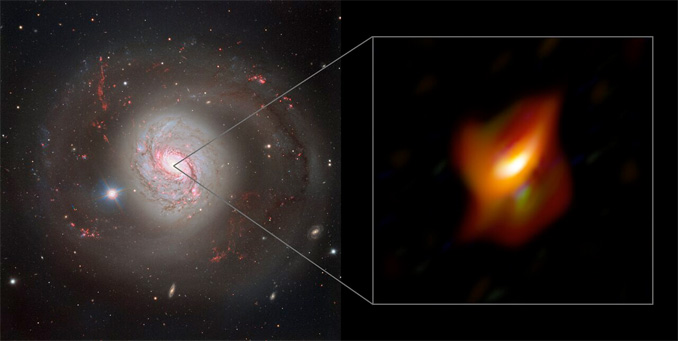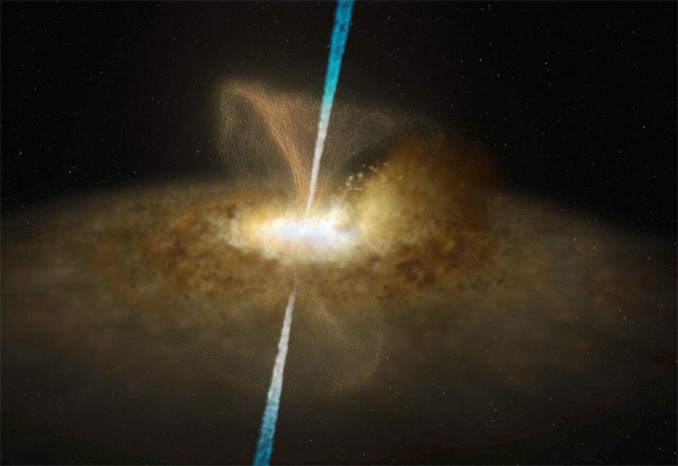
Astronomers have new evidence supporting the theory that black hole-powered active galactic nuclei, or AGNs, share a common structure and that their varying appearances depend on the orientation of thick, surrounding rings of dust as viewed from Earth.
The theory, known as the United Model of AGNs, has long held that active galactic nuclei share a common structure despite their different appearances. Some radiate radio waves, but others do not. Some shine brightly in visible light while others are more subdued, all depending on the thickness of the surrounding dust and its orientation.

Using the European Southern Observatory’s four 8.2-metre telescopes acting in concert as an interferometer, a team led by Violeta Gámez Rosas from Leiden University detected just such a ring of debris around a supermassive black hole at the heart of M77, a face-on spiral galaxy some 47 million light years away. The observations support the United Model.
“The real nature of the dust clouds and their role in both feeding the black hole and determining how it looks when viewed from Earth have been central questions in AGN studies over the last three decades,” said Gámez Rosas. “Whilst no single result will settle all the questions we have, we have taken a major step in understanding how AGNs work.”

The Multi AperTure mid-Infrared SpectroScopic Experiment (MATISSE) attached to the VLT, along with data from the Atacama Large Millimeter/Submillimeter Array, allowed the team to build up a detailed picture of the dust ring surrounding M77’s central black hole, revealing a thick inner ring and an extended disc. The black hole is positioned at the center of the disc as the Unified Model suggests.
“Our results should lead to a better understanding of the inner workings of AGNs,” said Gámez Rosas. “They could also help us better understand the history of the Milky Way, which harbours a supermassive black hole at its centre that may have been active in the past.”



